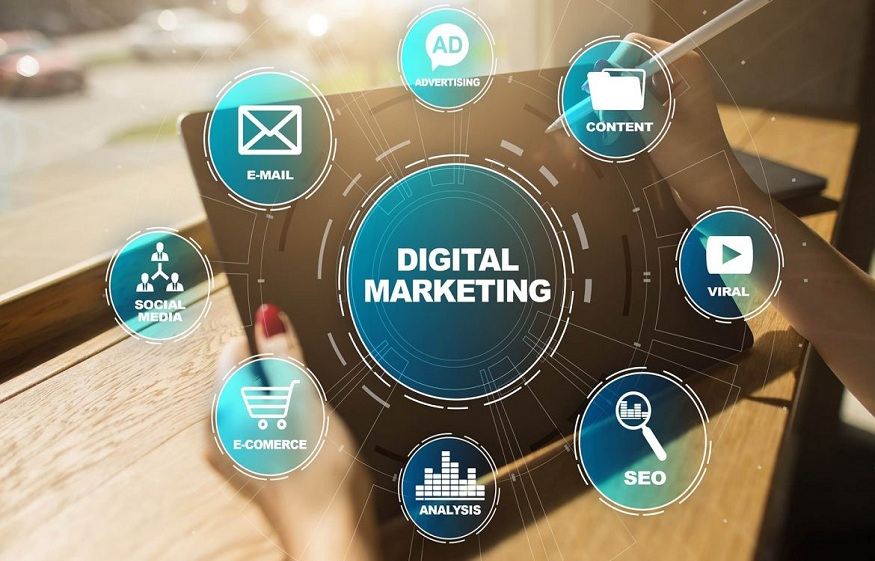
SEO is the acronym, which means “search engine optimization.” It consists of a series of optimization techniques, disciplines and strategies that are implemented on the pages of a website or blog to improve your website search engine rankings.
There are a series of other instructions that you need to read it out, but for that you have to follow the best seo community in your area.
How?
Optimizing sites and blogs through the use of techniques to improve the web Ranking of your pages and positioning your company in the first results of Google, for example, increase your business opportunities.
Ultimately, 90% of people who search Google only click on the results that appear on the first page of the engine.
The main objective of SEO, therefore, is to increase the volume of organic traffic and ensure more visibility for web pages.
What is the difference between SEO and SEM?
We do not want to leave out of this article a topic that causes a lot of confusion among professionals who are just beginning in the world of Digital Marketing and this is the difference between SEO and SEM.
Although at first they may seem to refer to similar actions given the similarity of their acronyms, you should pay close attention because they refer to completely different actions. Let’s see one by one.
SEO = organic positioning
As you already know, SEO refers to all those actions that you can take inside or outside of your website to optimize its positioning in search engines organically. This last point is key since organic means “no payment”.
With an SEO strategy you do not pay Google or any other search engine to gain positions in the SERP. It is your valuable content and your optimizations that earn these places in their own right.
SEM = Positioning payment
By contrast, SEM — Search Engine Marketing — refers to those strategies that include the use of paid ads.
That is, with an SEM strategy you create an advertising campaign so that when a user types a search, your site appears before the organic results in the form of an ad, as long as it agrees with the user’s search intention.
Which to choose?
A complete Digital Marketing strategy should not opt for one and exclude the other. That is, you must include in your strategy a combination of SEO and SEM strategies to increase their results.
With the use of SEM, results are generated instantly in a short term, necessary when you want to increase visibility or brand recognition quickly or when you want to launch products or promotions for a limited time.
In addition, SEO is a strategy that works in the medium and long term, constantly bringing better quality visits.
If you want to expand this matter further we recommend you read our article on SEO vs SEM.
But what are the advantages of this SEO strategy and how efficient can it become? Here we present the main ones.
7 advantages of implementing an SEO strategy
- Increase the visibility of a brand
Implementing an SEO strategy is one of the best ways to increase the visibility of your brand organically.
Imagine the following scenario: your business deals with the sale of washing machines. One user, let’s call him Pedro, is having trouble with his washing machine, so he goes through Google to find out how he can fix it himself.
Coincidentally, you have an article that shows a step by step to repair washing machines, so conquer that visit for your website.
And although the article talks about repair and not sale, this is just the beginning of a customer relationship with your brand. It is what in Inbound we know as the attraction stage.
- Attract qualified traffic
Like Pedro, many other users will come to your content to solve their doubts or find solutions to their problems.
By creating valuable content, optimized for search engines, your website will organically attract the leads you are looking for, at the right time.
In this way, the more visits you receive, the more people will meet you and the more likely you are to close a sale, which leads us to the next advantage.
- Generate sales opportunities
Imagine that, although Pedro repaired his washing machine, he definitely needs to change it, since he still has other failures.
As Pedro already knows your brand, thanks to the fact that he has found the solution to his questions in your articles, he will surely already trust your business and think of you, as the first option, to buy his next washing machine. This is the decision stage in the Inbound methodology.
- Position a brand as an authority in the market
Continuing with our example, in Pedro’s mind and in that of many other users like him, your company will occupy its Top of Mind, that is, it will be the first brand that comes to mind when they think of washing machines.
SEO allows you to achieve this by facilitating correct indexing and improving the organic positioning of your content.
So, whenever Pedro or anyone else searches for information on washing machines, your website will be the first to appear, or at least, the result they are looking for.
In this area, a concept that has been highlighted is that of EAT (Expertise, Authoritativeness, Trustworthiness), an acronym used to represent the three fundamental elements of quality content.
Recently Google has viewed with good eyes the content published by authors who have technical authority and credibility recognized in the respective topics.
For example, on a disease content website, you want to have articles written by doctors, with an author page that contains information about your professional history.
- Educate the market
Users like Pedro have surely been educated with your articles on the operation, care and maintenance of their washing machines.
Also, they have managed to understand what are the specifications they are looking for with their washing machine, according to their personal needs.
As you can see, the importance of positioning a content lies not only in closing sales, but also in educating the audience to make better decisions.
- Win over the competition
Finally, if it is your brand that produces the most complete and relevant washing machine content, who do you think users will look for when they want to know something about washing machines? Who will they trust if they need to make a purchase?
Although it takes time and a lot of work to implement an SEO strategy, in the long term it generates constant and lasting results.
- Better return on investment
According to SEO Expert requires a much lower investment than other strategies such as SEM or traditional advertising.
The investment that SEO requires translates into the payment of some tools such as those we saw previously, the salaries of the SEO specialist or the content creator and the payment of the domain and hosting of the website, for example.
However, the return more than multiplies the investment and the best thing is that the work that was done once continues to generate returns in the medium and long term.
We are going to explain now, step by step, the most important SEO concepts and teach you the strategies we use to reach the top places in Google.
And it all starts when the user does a search.
What types of search are there?
The psychology of search revolves around the user: their needs, their way of searching for answers, the results they expect when searching for something, etc.
It is in the interests of companies that invest in Digital Marketing to respond objectively to all these doubts and needs.
One of the first steps to understand the user’s search is to know the intention of their navigation, which is essential in order to attract the correct audience to your site.
So we are going to explain what brings the user to Google. There are three types of search:
- Navigational search
This type of search – also known as a shortcut search – happens when the user already knows which site they would like to visit, but may not remember the full URL or be lazy to type.
For example, if the user searches for “ Rock Content ” or “Rock Content blog” to find our content, their search intention is clear and, therefore, there is little chance that this user will change their final destination on the web. – This person already knows what they are looking for.
- Informational search
As the name itself says, in the informational search the user searches for information, whether through news, product launches or explanatory articles.
Unlike navigational search, the user does not know exactly which site they will go to find the content they are looking for, as it is not possible to clearly identify their search intention.
In an Inbound Marketing strategy , this organic visibility is essential to attract users to the pages of a business and start their journey to become customers.
By not knowing exactly which site they want to visit, the user tends to use organic results to find the solution to their question or need, and it is at this moment that the good web ranking of the blog or site is an advantage for business.



